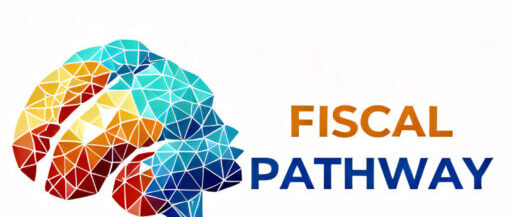Consumers adore hearing the words “cash back” in today’s financial landscape. It’s what most people picture when they think of shopping, using a credit card, or even using some debit card programs. But how does cash back work precisely? might you tell me how it works and how I might benefit from it? Here, we’ll go over the basics of cash back, how it works, and some smart strategies to get the most of your earnings.
What Is Cash Back?
The term “cash back” refers to a simple financial incentive offered by merchants, banks, or credit card firms. It’s a percentage of the total purchase price that the consumer gets back. Money, either credited to your account or sent to a bank account you’ve connected, is the actual form of the prize.
There are two main contexts in which cash back is used:
- Cash Back Credit Cards: Credit cards that give you cash back on a portion of your purchases.
- Cash Back at Retailers: When you use your debit card at some businesses, you may be able to obtain some of your money back in the form of cash.
To maximize your chances of receiving a rebate, you should familiarize yourself with the specifics of how these two ideas operate, as they are rather different.
Cash Back Credit Cards: How Do They Work?
Using a credit card that offers a cash-back incentive is a typical approach to earn rewards. These credit cards provide a portion of your purchases back as a reward, which may be converted into cash or credited to your account. Allow me to explain it in simpler terms:
1. Percentage-Based Rewards
The majority of cash-back credit cards calculate their rewards as a percentage of the amount you spend. If you spend $100 on groceries using your card that provides 1.5% cash back, for instance, you will receive $1.50 back. Although most cards provide cash back rates between 1% and 2%, others provide much greater rates for particular purchases like grocery, dining out, or travel.
2. Tiered Cash Back
You can earn a larger percentage in particular categories with some cards’ tiered cash back systems. Take grocery shopping as an example; you might receive 5% cash back, petrol 3%, and everything else 1%. If your purchasing habits fall into the areas with the highest incentives, a tiered system may provide you amazing benefits.
3. Rotating Categories
You can find credit cards that alter their category quarterly. For example, after three months of receiving 5% cash back on groceries, the focus may switch to restaurants or entertainment for the next three months. The problem? If you fail to “activate” these categories on a quarterly basis, you will only be eligible for the base cash back rate.
4. Flat-Rate Cash Back
No matter what you buy, with a flat-rate cash back card you’ll always get the same percentage back. These are perfect for those who like a straightforward system that doesn’t need them to keep track of spending categories or worry about quarterly activations. With a flat-rate card, you won’t have to worry about keeping track of which purchases earn more and when.
Cash Back at Retailers: The In-Store Option
When you use your debit card to make a transaction, you might also hear the term “cash back” instead of a credit card. Customers may skip the trip to the ATM and just take out cash from their purchases at many supermarkets, petrol stations, and other retail establishments.
Here’s how it works:
- Step 1: One must first use their debit card to make a purchase. You will be asked to withdraw cash at the prompt from the payment terminal.
- Step 2: Within the constraints of the store, choose the quantity of cash you would want to receive. The total amount you pay will be increased by the cash.
- Step 3: Once the transaction is complete, the cashier will give you the cash.
For example, if you buy $20 worth of groceries and request $40 in cash back, your debit card will be charged $60, and you’ll walk away with $40 in cash. This can be a convenient way to get cash without paying ATM fees.
Benefits of Cash Back Programs
The appeal of cash back programs extends beyond the seeming simplicity of receiving a portion of your purchases back. Now we’ll take a look at a few of the main advantages:
1. Simple and Straightforward Rewards
Cash back is far more straightforward than other reward systems offered by credit cards, such as points or miles. Concerning conversion rates or ban dates, you should not fret. Cash that can be used for anything—that’s what you get.
2. No Expiration Dates
You may save up cash back rewards without worrying about losing them since in many situations, they don’t expire. You should check the terms and conditions of your credit card to see if there are any restrictions, but in general, these incentives are more adaptable than point schemes.
3. Direct Financial Benefit
Earning cash back provides a tangible monetary advantage. No matter what you do with it—pay off your credit card, put it in the bank, or spend it somewhere else—you’ll feel good about it right away. It’s the same as receiving a little discount with each transaction.
4. Stackable with Other Rewards
You can combine cash back with other deals if you’re smart. As an example, in addition to the usual rate of cash back, many cash back credit cards additionally provide extra cash back through partnerships with online shopping portals or merchants. To get the most out of your money, use credit card rewards in conjunction with store-specific promos.
Tips to Maximize Cash Back
Now that we’ve gone over the fundamentals, what steps can you take to maximize your chances of receiving a refund? Now, for some advice from the pros:
1. Choose the Right Card for Your Spending Habits
Find a card with more rewards if food and gas account for a large portion of your spending. A card with shifting categories might be more useful if you travel a lot. Before you apply for a credit card, take stock of how much money you typically spend.
2. Take Advantage of Sign-Up Bonuses
A sign-up bonus might be rather advantageous when you apply for a cash back credit card. A card may advertise a $200 bonus after three months of use if you charge $500. Take advantage of these deals by applying when you know you will be spending a lot, such as on holidays or vacations.
3. Stay Organized with Rotating Categories
It is imperative that you activate the bonus categories quarterly if your card has rotating categories. To simplify things, you can utilize the card issuer’s app or set reminders. You may maximize your cash-back earnings by allocating your expenditure to these areas.
4. Pair with Cash Back Apps and Portals
To maximize your earnings, consider using a cash-back app like as Rakuten, Honey, or Ibotta twice. You may combine the cash-back benefits of your credit card with the cash-back offers of these apps when you shop through their platforms.
5. Avoid Interest Charges
Credit card interest costs quickly offset cash back benefits, which are a fantastic method to earn money as you spend. Never put your hard-earned rewards at risk by carrying a balance from month to month; pay off your whole balance every month.
Is Cash Back Really Worth It?
Yes, according to the majority of individuals. You may earn rewards for everyday transactions with cash back with little to no more work on your part. However, responsible credit card use is essential for getting the most out of cash back schemes. This includes not making any frivolous purchases in order to rack up rewards points and instead paying off your amount in full every month. In addition, remember to check the interest rates and fees that come with your card. Unless the incentives and rewards are very large, the yearly charge can be more than the cash back advantages.
Final Thoughts
You may get more bang for your buck by taking advantage of cash back schemes. You just spend money, and you get rewards. This is true whether you use a credit card to receive cash back or take advantage of in-store promotions. Making the most of these programs and enjoying some money benefits along the road is possible with the correct cash back approach, proper reward organization, and the avoidance of needless costs. You are now prepared to make the most of every cash-back offer that comes your way!
With the information in this article, you can make informed choices about cash back programs, making your money go further as you enjoy the benefits of ordinary purchases.
FAQs on Understanding Cash Back
Which is cashback?
One kind of incentive is cashback, which is essentially a percentage of your expenditure that you get back as cash when you use your credit card or make a retail purchase.
What is 2% cash back?
If the cash back rate is 2%, then you will receive 2% of your total purchase price back. To illustrate, if you spent $100, you would receive $2 back.
What is an example of cash back?
Using a credit card that offers a 1.5% cash back perk is one example. You would receive $3 in return for every $200 you spent on food.




